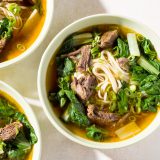On my second day in Taiwan, I climb a narrow staircase to the second story of a ragtag commercial building off a busy street to meet Chuang Pao-hua. She is the founder of the Chung-hua Culinary Teaching Center, in Taipei’s Datong District, a former trade center that’s now a hub for tea merchants, dried foods and craft shops.
The room is long and narrow, with seafoam green floor tiles and whitewashed walls, and a large work table down the center. This cooking school is all business—plastic chairs and tables, well-worn wood cutting boards and freestanding propane burners.
From this outpost, Chuang has taught some 70,000 students more than 300 recipes open Taiwanese restaurants in Europe, India, the United States and beyond, as well as local street vendors in Taipei. Posters of her are everywhere, including a life-size cardboard cutout displaying her signature thumbs-up pose and winning smile. She’s nearly 70, but looks and acts half that.
I am here for a private lesson in one of Taiwan’s signature dishes, niu rou mian, or beef noodle soup. Though the dish is extremely popular, it’s a relatively recent immigrant to the island nation—it first debuted in Taiwan in the mid-20th century, brought over by homesick cooks from mainland China.
The soup has two main variations. One, called huang, is built on a light, clear broth. The other—hong shao—has an oily red broth spiced with chilies and, in certain areas, tomatoes. Sichuan’s toban djan—a spicy-salty paste made from fermented broad beans, chilies and salt (see sidebar)—is an essential ingredient in the latter.
Chuang shows me the traditional method for making the hong shao version of niu rou mian. It involves a fair amount of heavy lifting: making stock from beef bones, blanching beef shank to remove impurities and rendering beef fat in a wok. The fat from rendering is used to stir-fry spices and aromatics, including cinnamon sticks, cloves, Sichuan peppercorns and star anise, plus garlic and ginger.
After an extensive amount of prep work, the ingredients are added to an earthenware pot for long, slow cooking that breaks down the beef. Noodles are cooked separately, and the dish is assembled with blanched greens and scallion whites. The broth is rich, the meat succulent and the texture beguiling, with a counterpoint of just-crisp greens and silky yet chewy noodles. No wonder it’s become a national dish.
In adapting this recipe for the American home cook, we substituted a Dutch oven for a wok and eliminated the homemade stock and the beef fat. But the original recipe, though more complex, still offered useful lessons.
Most of us don’t use a wok, but it is an amazing cooking vessel. Chuang uses it to stir-fry, blanch and render fat. The shape is perfect for handling a wide range of ingredients, from a handful of whole spices to large beef shanks. Plus, the wide surface makes it easy to monitor ingredients, moving them around quickly to adjust heat levels. If I could have only one cooking pan in my house, it would be a wok.
Chuang also uses beef bones and fat—ingredients no longer part of the American repertoire—as a quick and inexpensive way to build flavor, rendering beef fat to use in place of cooking oil. The adventurous cook would do well to learn the lesson of incorporating parts of the animal that modern kitchens overlook.

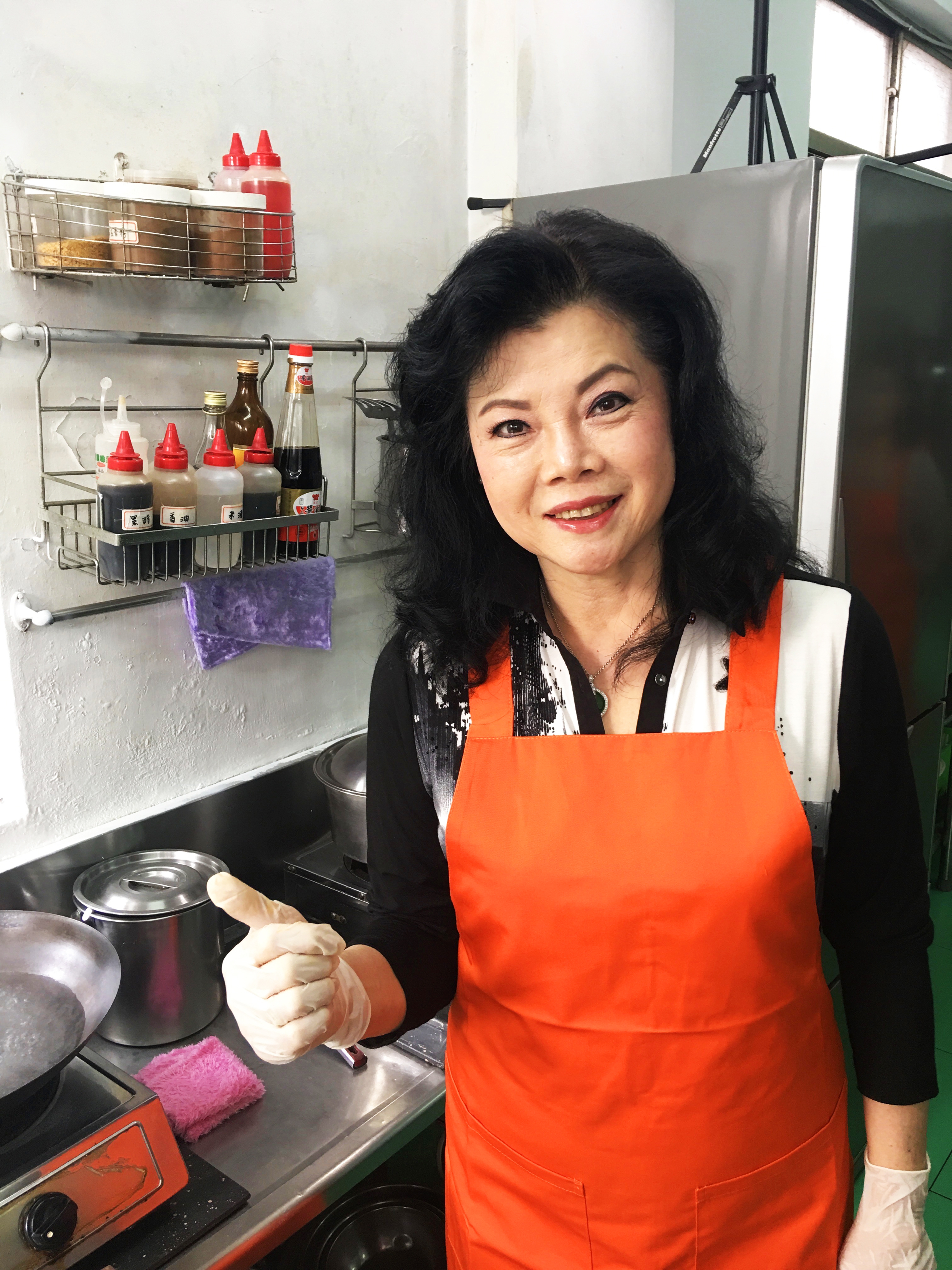
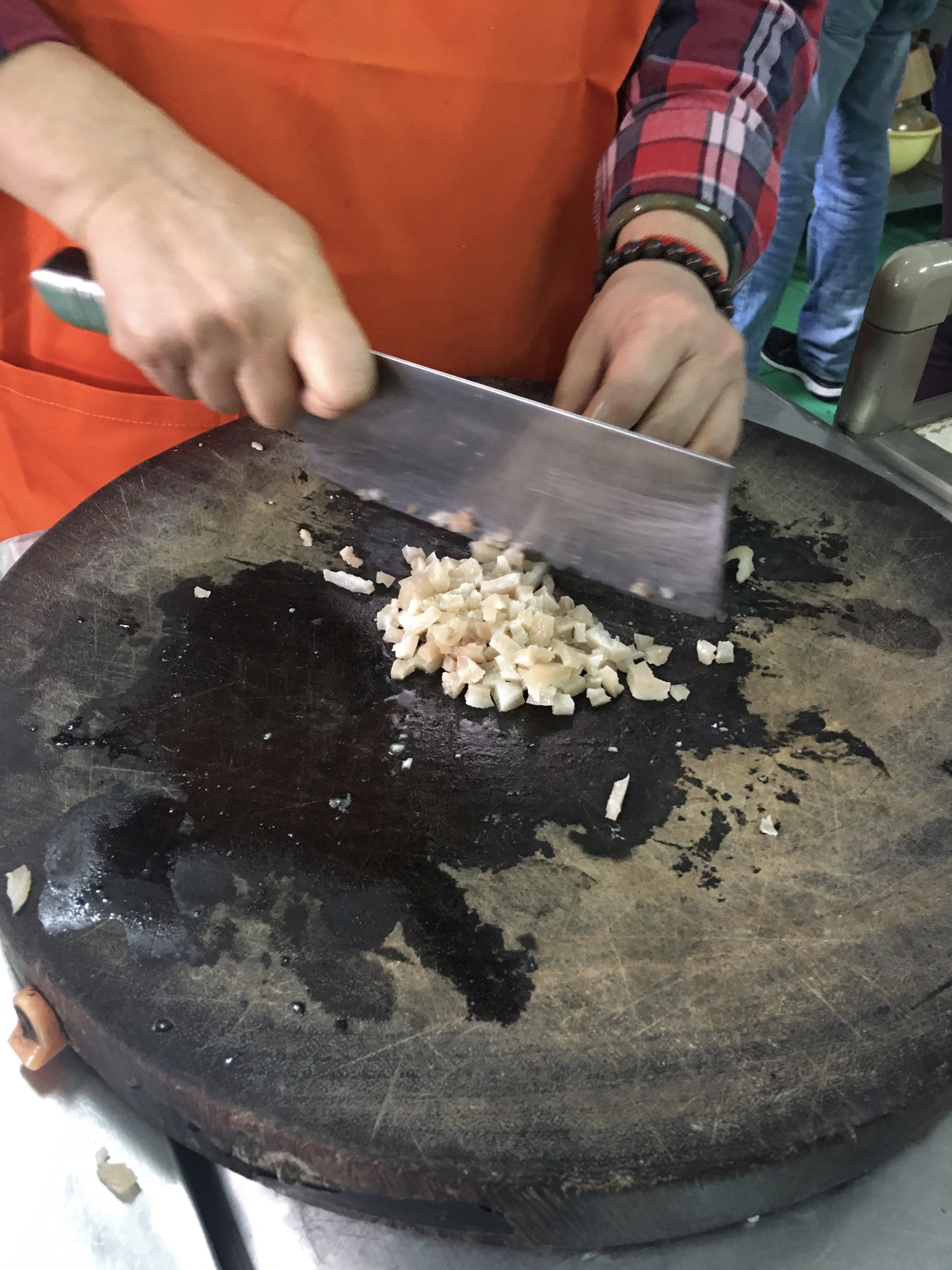
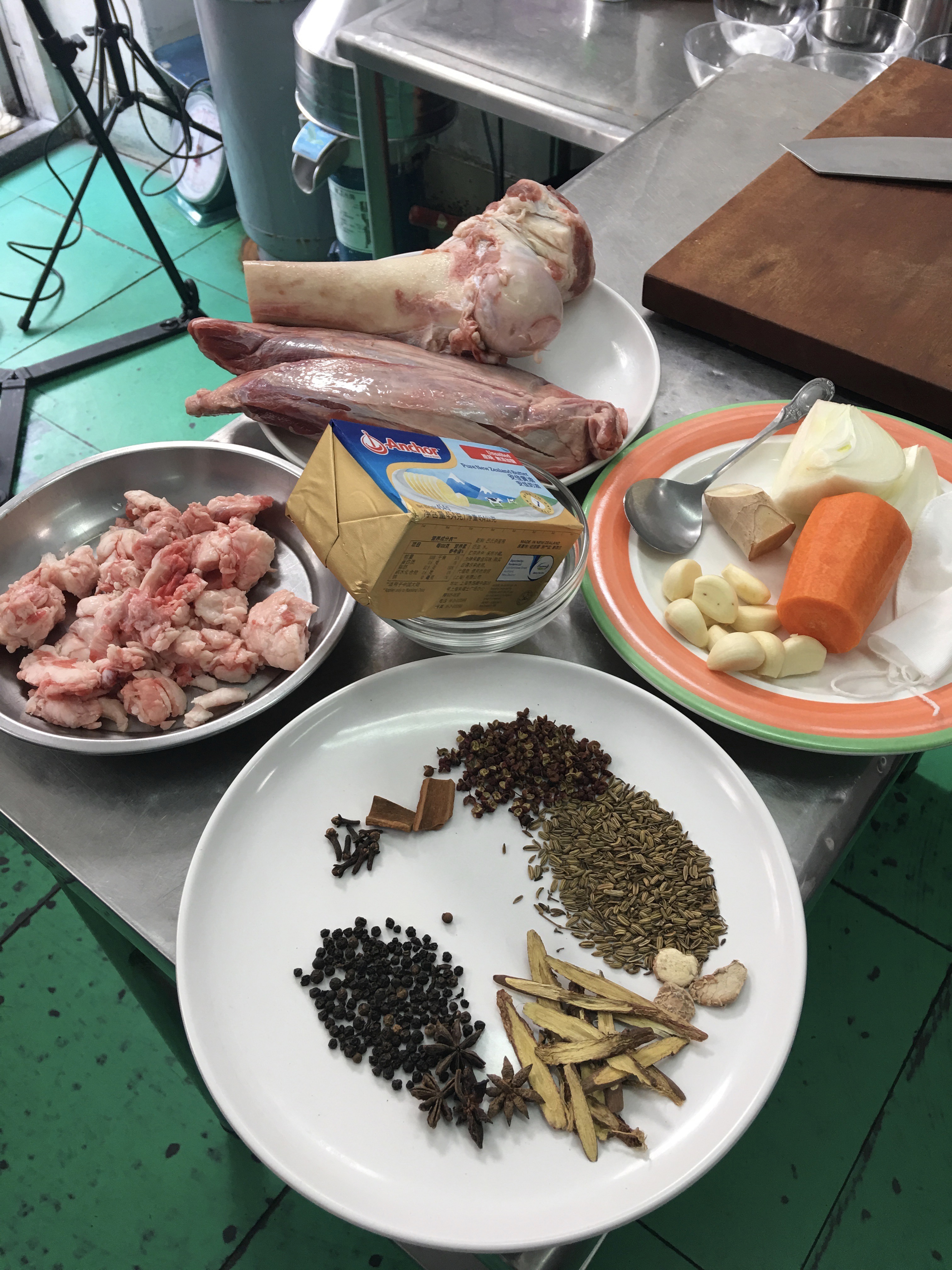
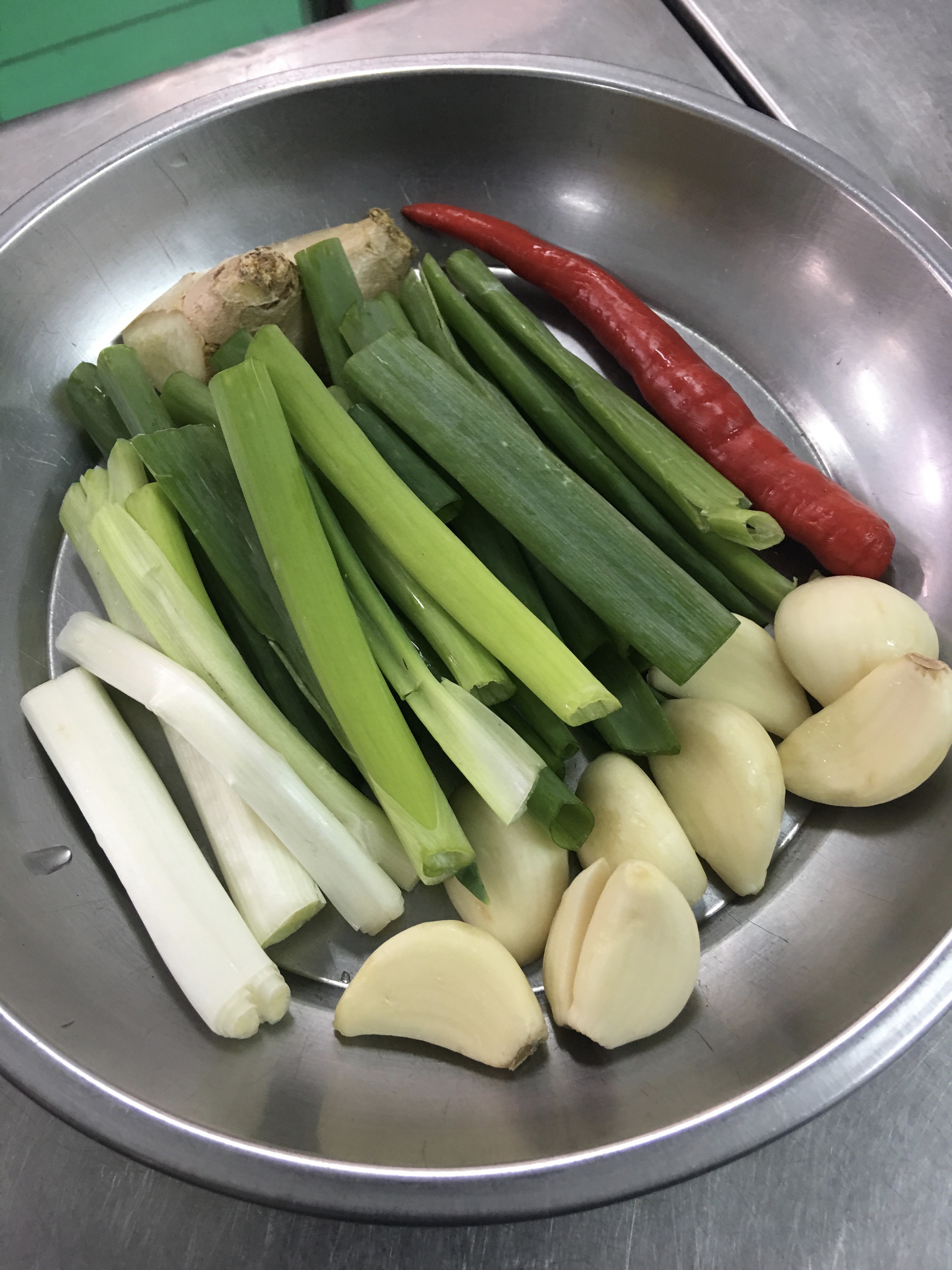
For Milk Street’s version of Taiwanese beef noodle soup, we preserved many of the spices and aromatics from the original recipe, including garlic, ginger, star anise, scallions and Sichuan peppercorns. These formed the backbone of our broth. To amplify its flavor, we used umami-packed ingredients like tomato paste, soy sauce and chili-bean sauce (toban djan). Dark brown sugar added balance and rounded out the spices.
As for the meat, we stuck with shank, which produced a flavorful broth in two hours’ time.
We began by sautéing the garlic, ginger and scallions, then added the spices. The chili-bean sauce, tomato paste and brown sugar were added, then soy sauce, sake and water.
Next, we added the beef shanks and cooked for two hours. The rest was simple enough—straining the broth, roughly shredding the meat and skimming fat. For greens, we used blanched bok choy. For noodles, standard dried Chinese wheat noodles of any thickness will do. Scallion greens were added for a traditional garnish.
Slurp down a bowl of Taiwanese beef noodle soup and, I promise, there is nothing else you could possibly want.
In traditional recipes, as well as Milk Street’s, Taiwanese beef noodle soup (niu rou mian) gets spicy-salty earthiness
from toban djan, or chili-bean sauce, sometimes referred to as the soul of Sichuan cooking. The spicy bean paste is also a key ingredient in mapo tofu, dan dan noodles and twice-cooked pork.
Toban djan originated during the 17th century in Pixian, not far from Chengdu. At its purest, the coarse, deep-red paste is made from fermented broad beans, red chilies and salt. The chilies are chopped, left to ferment under a layer of salt, then mixed with the broad beans—which have fermented separately for up to a year, often with wheat flour (which appears on many ingredient lists for toban djan). Outside Sichuan—in Taiwan and Hong Kong—producers often supplement the broad beans with soybeans and seasonings like chili oil and dried shrimp.
Traditionally, toban djan is placed in large earthenware jars that are opened daily to expose the paste to the sun. In factories, it is spread on shallow beds under a greenhouse-like ceiling. Either way, it is stirred daily and sun-dried for up to eight years, its flavor concentrating and deepening over time. A young paste will be chunky, spicier and brighter in color. An older paste will be thick, with a smoother texture, more pronounced earthiness and a dark brick-red hue. Sichuan cooks use toban djans of different ages to impart a range of flavors to a dish.
Chili-bean sauce’s intense saltiness makes it a poor fit for use as a condiment. In recipes that are built around its flavor, the paste is typically stir-fried in oil before any other ingredients are added so it can infuse the entire dish. It’s also stir-fried with ginger, garlic and scallions, then mixed with rice or noodles.
Toban djan (also spelled doubanjiang) comes packaged in jars or vacuum-sealed pouches. The most widely available brand in the U.S., Lee Kum Kee, includes soybeans and other nontraditional ingredients such as sugar. At Milk Street, we also like the potency of the Juangcheng brand—made with chilies, broad beans, salt and wheat flour. The U.S.-based Asian-American retailer Posharpstore.com sells 8-ounce packages for $2.50. Its texture is coarser than Lee Kum Kee’s, but mincing it before cooking makes it easy to work with.
